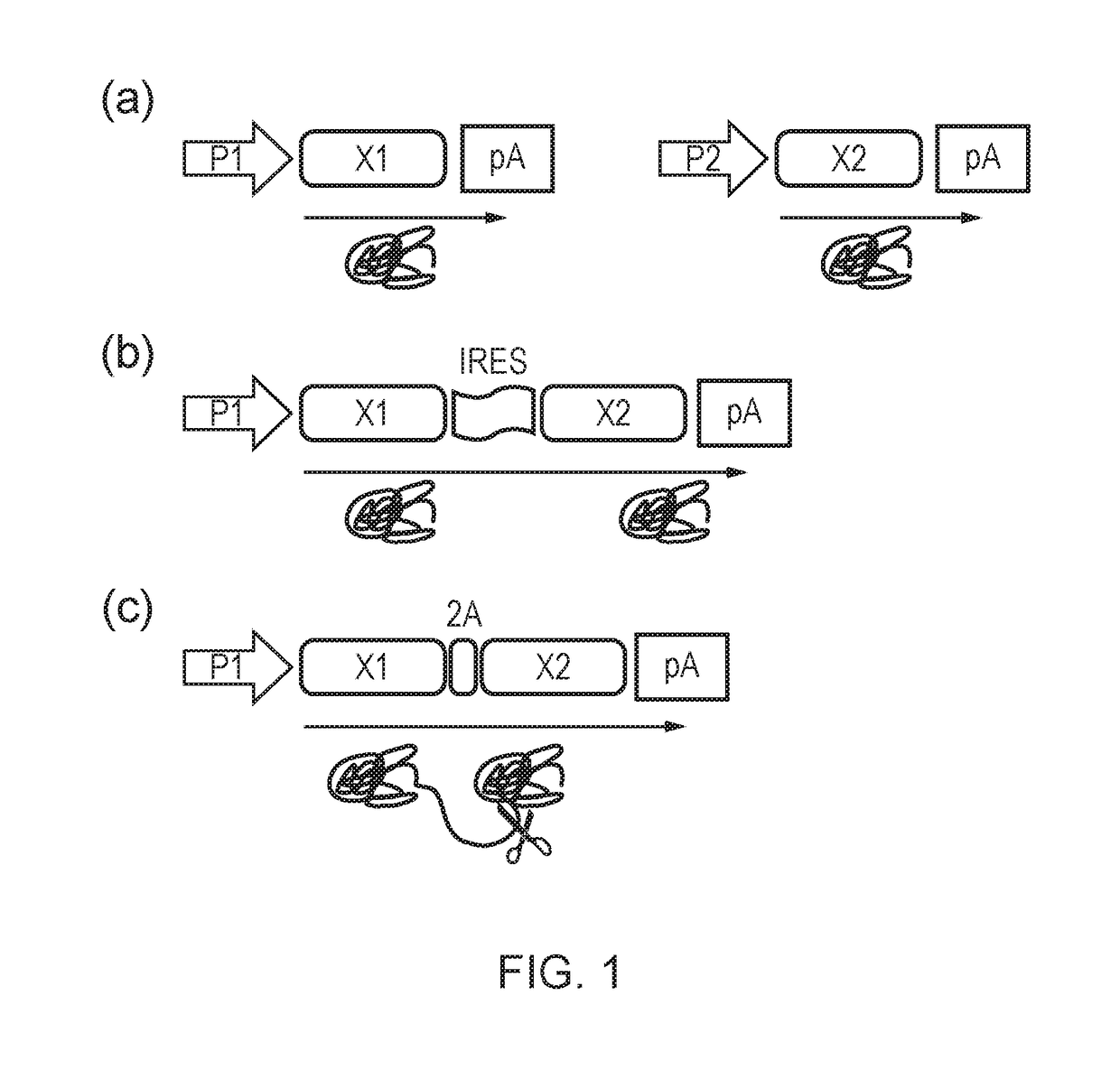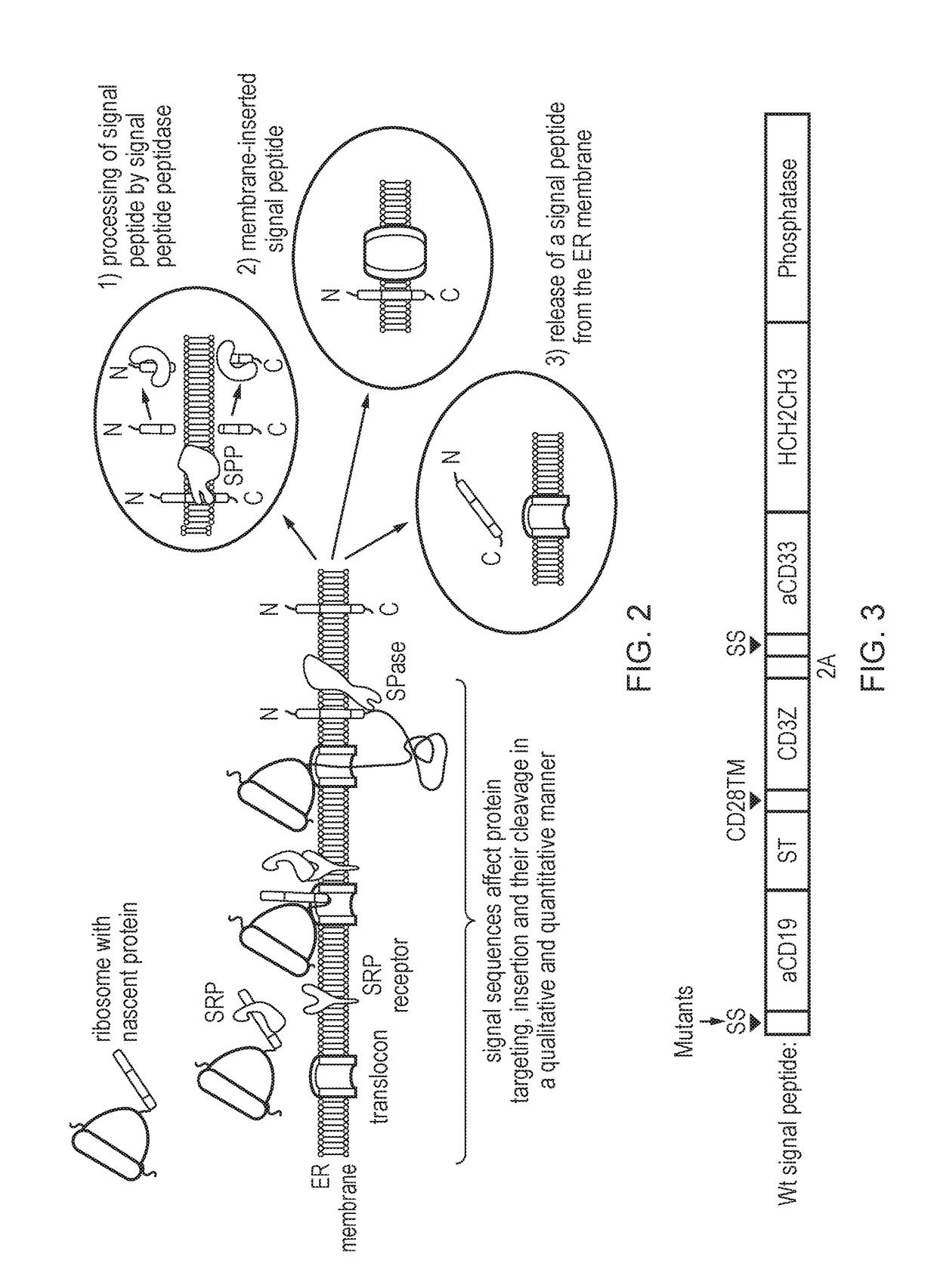Nucleic acid construct
a technology of nucleic acid and constructs, which is applied in the field of nucleic acid constructs, can solve the problems of difficult approach, difficult multi-transduction of the same cell, and high cost and unpredictable, and achieve the effect of silencing the second promoter, and easy synthesis
- Summary
- Abstract
- Description
- Claims
- Application Information
AI Technical Summary
Benefits of technology
Problems solved by technology
Method used
Image
Examples
example 1
Murine Ig Kappa Chain V-III Signal Sequence
[0127]PCT / GB2014 / 053452 describes a vector system encoding two chimeric antigen receptors (CARs), one against CD19 and one against CD33. The signal peptide used for the CARs in that study was the signal peptide from the human CD8a signal sequence. For the purposes of this study, this was substituted with the signal peptide from the murine Ig kappa chain V-III region, which has the sequence: METDTLILWVLLLLVPGSTG (hydrophobic residues hightlited in bold). In order to establish that the murine Ig kappa chain V-III signal sequence functioned as well as the signal sequence from human CD8a, a comparative study was performed. For both signal sequences, functional expression of the anti-CD33 CAR and the anti-CD19 CAR was observed. This substituted signal sequence and all subsequent mutations thereof were transiently transfected into 293T cells. Three days after transfection the 293T cells were stained with both soluble chimeric CD19 fused with rabb...
example 2
Relative Expression by Deleting Hydrophobic Residues in the Signal Peptide
[0128]Hydrophobic residues were deleted in a stepwise fashion and the effect on the relative expression of the anti-CD33 CAR and the anti-CD19 CAR was observed. The effect of one, two, three and four amino acid deletions was investigated and the results are shown in FIGS. 5 to 8 respectively.
[0129]All mutant constructs showed a decrease in relative expression of the anti-CD19 CAR compared to the anti-CD33 CAR. The relative decrease of anti-CD19 CAR expression was greater with a greater number of amino acid deletions from 1 to 3, but then plateaued out (four deletions gave a similar decrease in expression as three deletions).
[0130]Modification of the signal sequences in a nucleic acid construct encoding two polypeptides can therefore be used to control the relative expression of the two polypeptides.
[0131]All publications mentioned in the above specification are herein incorporated by reference. Various modific...
PUM
| Property | Measurement | Unit |
|---|---|---|
| nucleic acid | aaaaa | aaaaa |
| structure | aaaaa | aaaaa |
| hydrophobic | aaaaa | aaaaa |
Abstract
Description
Claims
Application Information
 Login to View More
Login to View More - R&D
- Intellectual Property
- Life Sciences
- Materials
- Tech Scout
- Unparalleled Data Quality
- Higher Quality Content
- 60% Fewer Hallucinations
Browse by: Latest US Patents, China's latest patents, Technical Efficacy Thesaurus, Application Domain, Technology Topic, Popular Technical Reports.
© 2025 PatSnap. All rights reserved.Legal|Privacy policy|Modern Slavery Act Transparency Statement|Sitemap|About US| Contact US: help@patsnap.com



